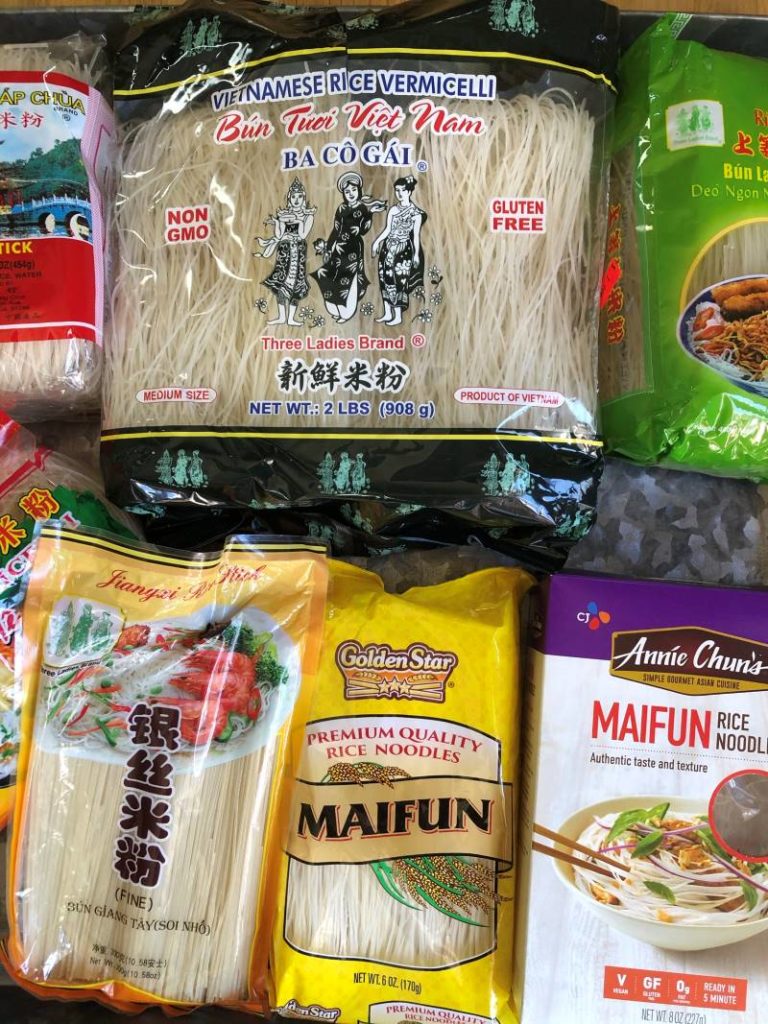
Shopping for Asian ingredients takes patience and a sense of adventure. There are many factors involved in finding the best version of what you need. Languages, store inventories, and differing uses in various cuisines complicate matters.
If you're confused when you go looking for rice noodles to make Vietnamese rice paper rolls, rice noodle bowls or noodle soups, you're not alone! I'm right there with you. Who knows, I may even be standing in front of a wall of rice noodles at an Asian market with you. I have my go-to brands but even they change over the years. And, nowadays, as Asian cooking ascends higher in popularity, there are decent ingredients at regular supermarkets too. But it can be challenging to decipher what's what.
This post hopefully clarifies things for you. Feel free to bookmark or take screenshots to help you shop. Also be sure to see my cooking tip video at the bottom of the page!
A Rice Noodle of Many Names
These are round rice noodles, not flat ones like what's used for pho, chow fun, and pad Thai. Bún is the Vietnamese name, whereas they're called by other names, such as khanom chin/jeen in Thailand. Like Italian pasta, they come in different sizes -- small, medium and large. The tiny ones are vermicelli like, the equivalent of Vietnamese bánh hỏi, which are steamed as tender slabs. Small and medium bun are great for noodle salad, salad rolls and most noodle soups. Large size bun is mostly for bún bò Huế noodle soup.
The problem is that for years, Vietnamese restaurants translated bun as rice vermicelli, the equivalent of the tiny version of the noodles. In reality, the noodles most often used for Viet dishes are more like capellini size or slightly bigger.
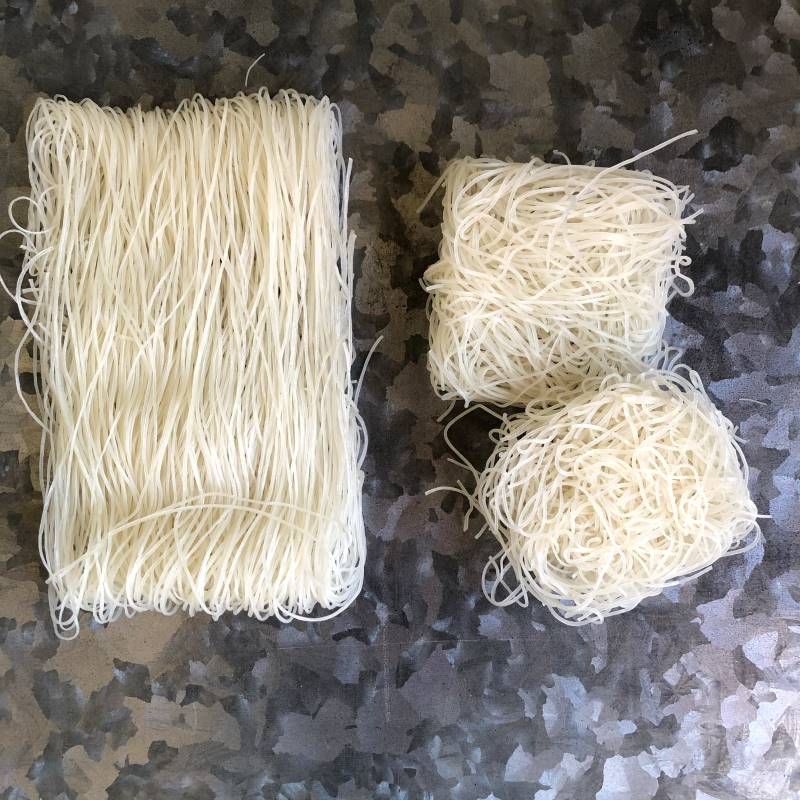
Aside from being called rice vermicelli on menus, the noodles are often packaged and sold as rice vermicelli (regardless of size), rice sticks or maifun, the Cantonese term for the noodles. This Wikipedia entry for rice vermicelli suggests that Viet bun is the same as fine strands of bihoon/bihun used for dishes like spicy stir-fried Singapore noodles. In the Viet mindset, they're not the same, even though if you say bihoon really fast, it sounds like bún ("boon").
Have your eyes glazed over? My apologies. The point here is be prepared to see these different terms for more or less the same rice noodle. But when you select the noodle for Vietnamese cooking, keep certain things in mind!
Bun Rice Noodle Sizing Issues
When shopping for round rice noodles to make a Vietnamese dish, look at the package for the size of the noodles. For example, which of these two packages of rice noodles should you select for a rice noodle salad bowl?
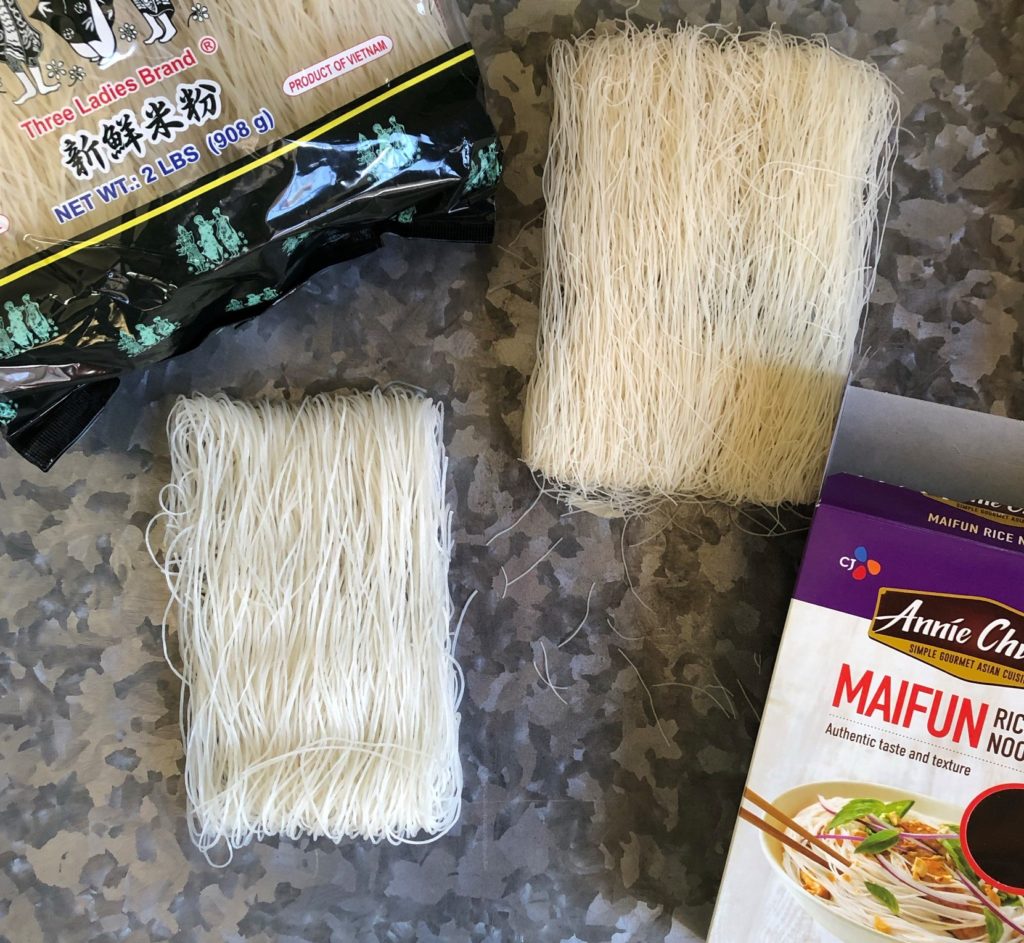
The Three Ladies brand is labeled rice vermicelli where as Annie Chun's is maifun. I'd go for the Three Ladies -- if I'm shopping at an Asian market, where it's commonly sold. If I'm at a regular supermarket, I'd skip Annie Chun and look for other options.
The finer noodles are great for stir-frying and just ok for noodle bowls and rice paper rolls. They are simply not big enough to carry the flavor of those later two dishes well. They're also tricky to boil up nicely because they're so fine.
Supermarket Bun Options
At mainstream grocers, look high and low. First check the Asian food section where you'll likely see Annie Chun. There maybe Dynasty brand of Maifun too. I don't have a package of that to show but the noodles are bigger than Annie's. But if you spot Golden Star, it's good stuff and the size is nice for Vietnamese dishes.
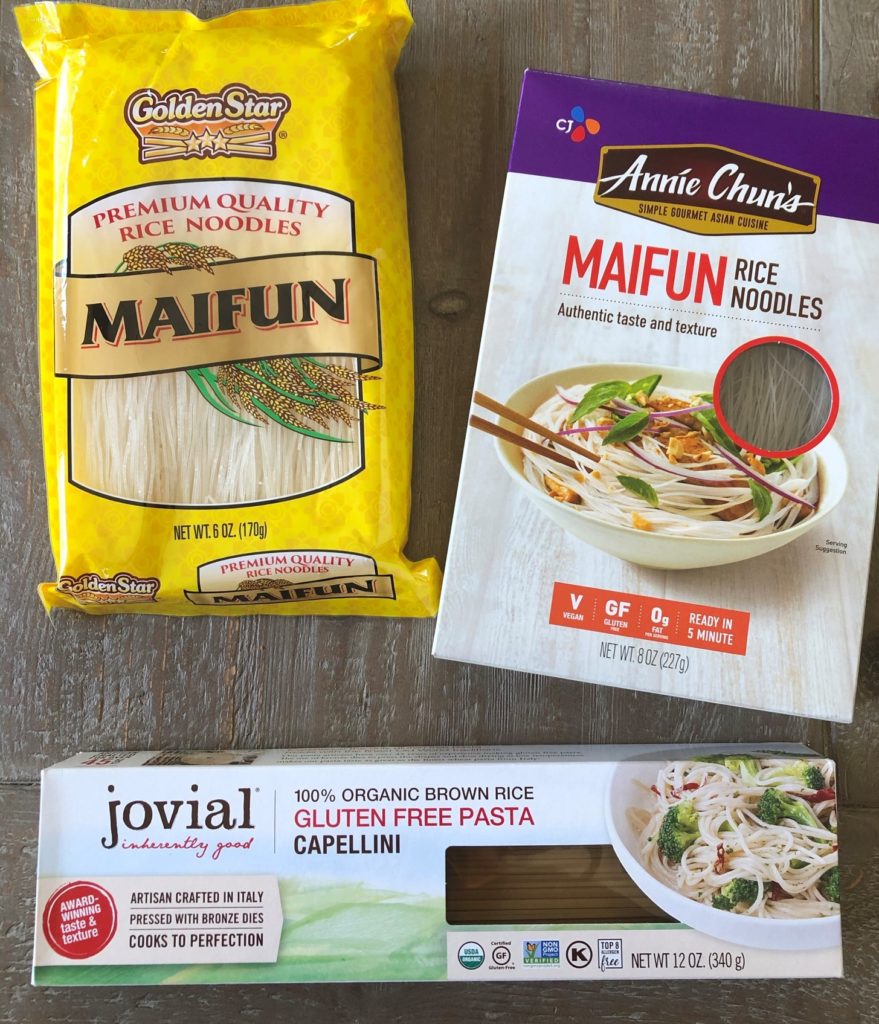
If the Asian food section turns up nothing, try the gluten-free pasta section. Jovial is pricey but it's an excellent whole grain, all-rice option that frankly tastes very close to fresh rice noodles in Vietnam. Or, look for other all-rice noodles, such as ones made by Tinkyada.
Shopping for bun at Asian Markets
The selection all depends on where you shop. For cooking up Viet food, I mostly shop at Chinese, Chinese/Vietnamese, or Vietnamese markets. That's because the selection is broad. As mentioned in the post on Asian grocery shopping in San Jose, Asian markets vary because Asia is vast.
Popular markets like H-Mart and 99 Ranch lean strongly toward Korean or Taiwanese and Chinese groceries, respectively. While they offer good pan-Asian inventories, they will stock the top, most reliable brands (they only have so much space!). Frequently seen brands of bun rice noodles include these:
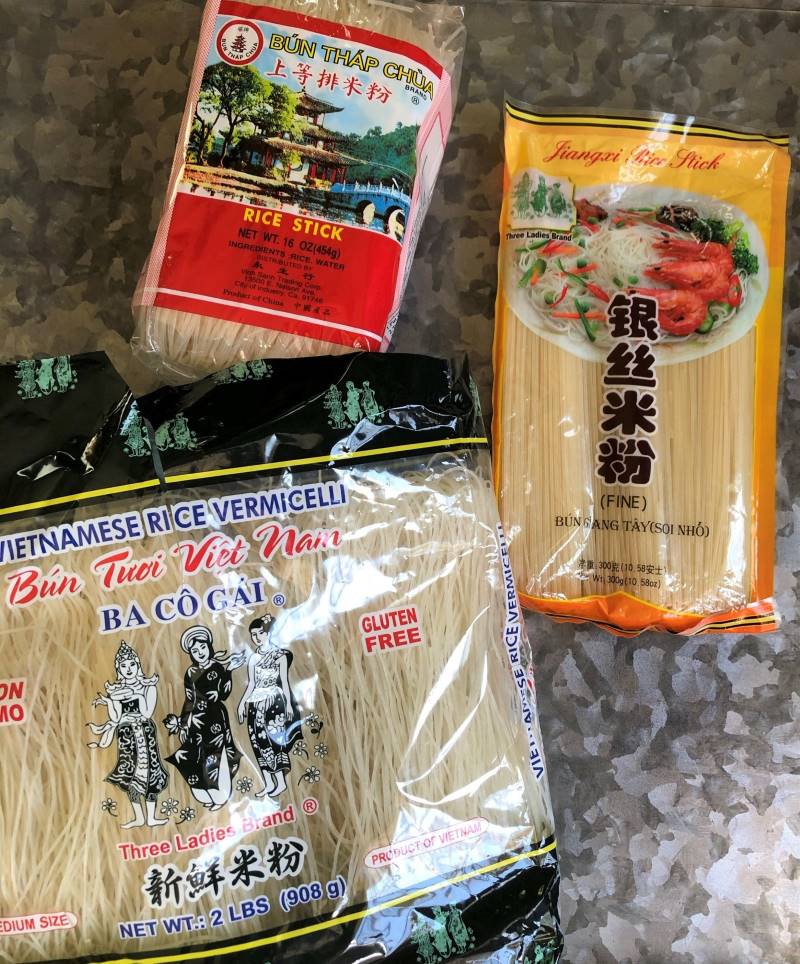
Pagoda brand (Bun Thap Chua) was the leading Chinese brand for decades and is still excellent. Jiangxi Rice Sticks by Three Ladies comes as straight sticks(!) and are sold as fine, medium and large. Choose fine and medium and you'll be good for most Viet applications.
The two-pound package of Three Ladies is a Vietnamese market find. At most places, you'll see one-pound packages. It's a great brand to go with and I have used their rice products for years.
Outlier Bun Rice Noodles
And if you're in the heart of a Little Saigon, or if your Asian market has an interesting source for inventory, you may spot brands like these:
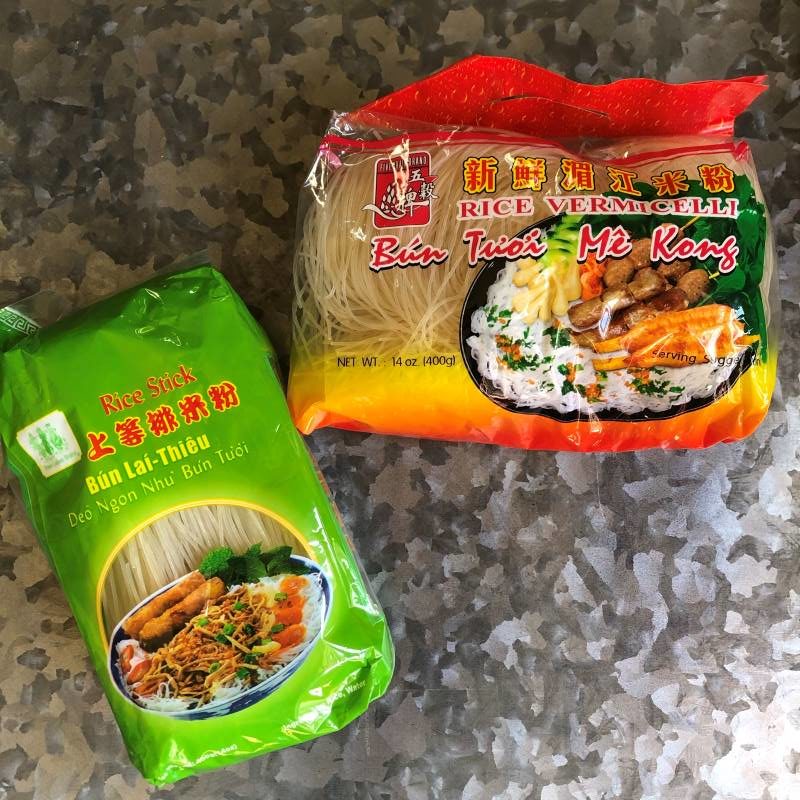
What is bún tươi on the labels? It means fresh bún, and signals that it comes close to the real deal fresh noodles you get in Vietnam. I pick these noodles because the Me Kong one was on the thicker and stiffer side. The Bun Lai Thieu promises to be dẻo (chewy) and ngon (tasty) like fresh noodles. I've not tried these yet but hopefully, they'll live up to their claims!
Bun Rice Noodle Cooking and Serving Tips
Despite what you may have read, the noodles need cooking. They cannot merely be soaked and served. Noodles that are only soaked taste like fiber optics and they won't absorb flavors well. I've had to correct professional chefs on this matter. So, boil the noodles! Boil them until they're chewy-tender. That timing may not jive with what's on the package cooking instructions. Go ahead and cook off road.
I made this video tip to explain something that's cool and helpful to do before serving bun rice noodles:
If the video doesn't load, refresh your browser or try another browser. This works on Chrome, Safari and Edge.
Have any tips or questions? Please share them via a comment!















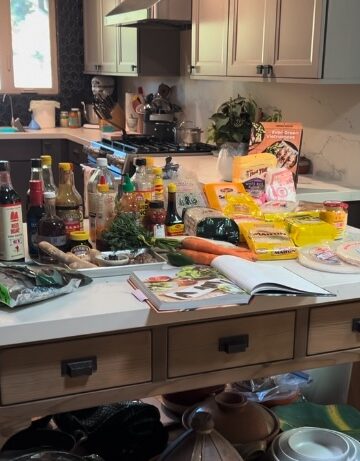
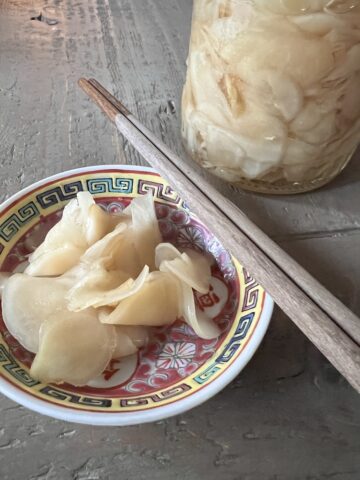
Thuy says
Hi, my favorite is Star Anise Foods's Brown Rice Noodles With Green Tea; it cooks within a couple of minutes, and it's healthy and delicious. I also really like their Brown Rice Spring Roll Wrapper: healthy and delicious. They recently started selling white rice vermicelli noodles and pho noodles. I buy things from them to support Vietnamese women-owned business and to support products actually made in Viet Nam.
Andrea Nguyen says
Thanks for the tip!
Melisa says
My in-laws are Vietnamese. I noticed his grandma boiled the bun with a little bit of vinegar - she said the bun comes out whiter/cleaner. Is this a traditional method?
Also, his mom starts the bun in cold water and brings to a boil. Is there a difference from just putting in already boiling water? Thank you for this great article.
Andrea Nguyen says
I don't know but the noodles turn out white without vinegar in my kitchen! You can start the noodles in cold water but watch it more on timing. What if there's a bunch of water in the pot and the noodles take longer to come to a boil? When does his mom pull the noodles?
Maureen says
This is so helpful! I moved to nyc from California 23 years ago and only in last 5 years have I found the Vietnamese brands I grew up with. I’ve made some strange bun in that time with the wrong noodles.
Andrea Nguyen says
Excellent! Glad to be of help, Maureen.